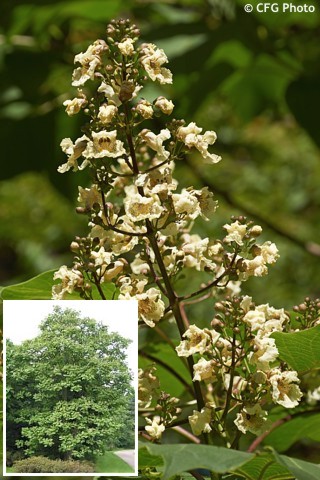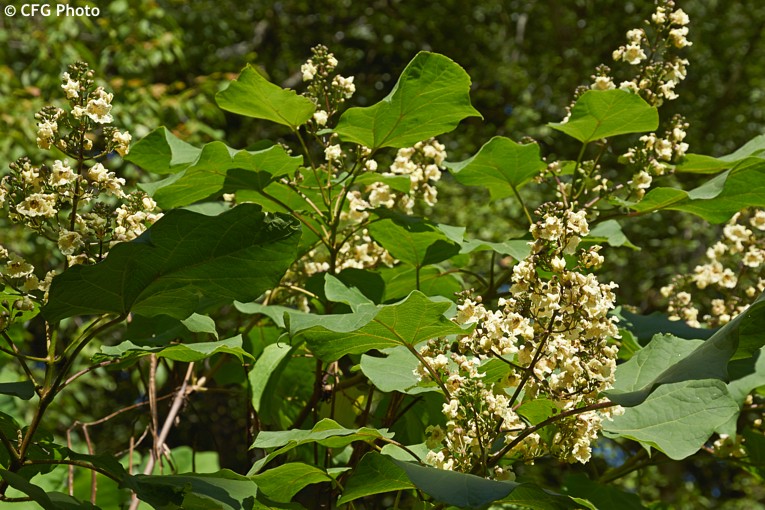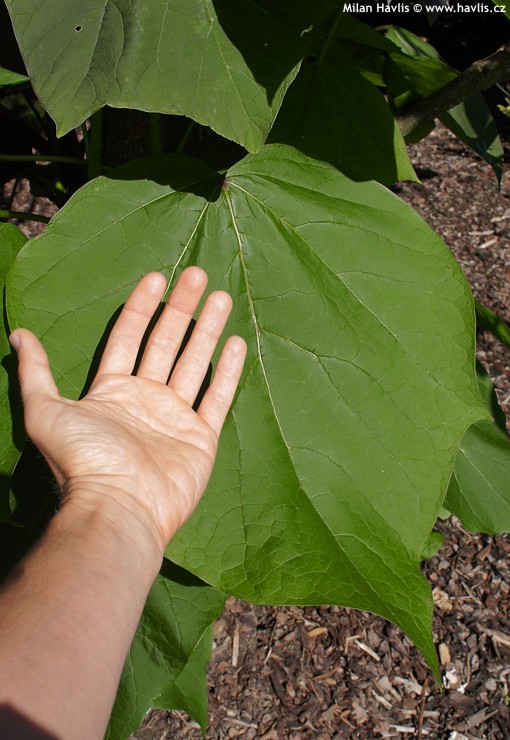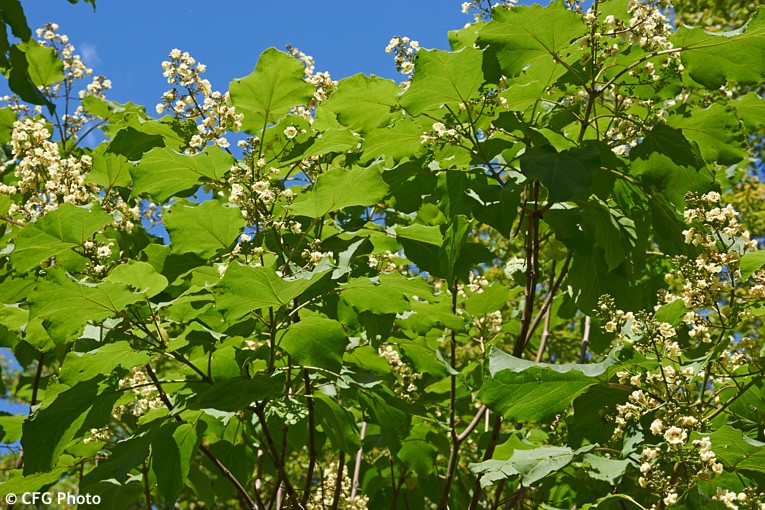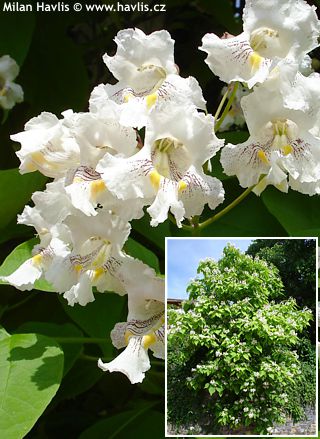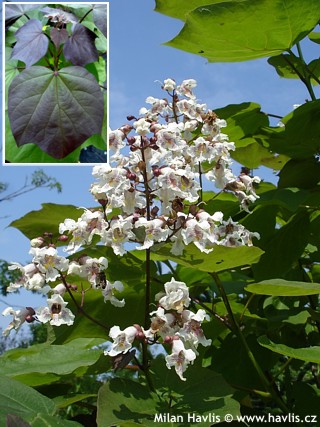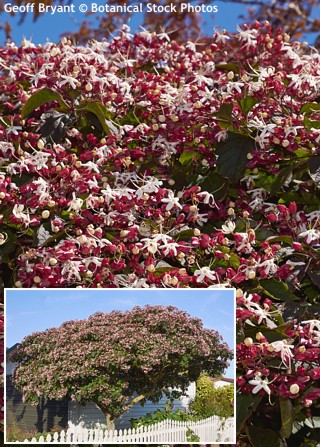Catalpa ovata Chinese catalpa
Catalpas have been grown in our country for many years. The species may be found in every larger city as an important item of its city park. It offers outstanding features such as large leaves, attractive flowers in summer, and long cigar-shaped seed pods in winter, hence its name Indian Bean Tree. Chinese catalpa is a close relative to southern catalpa which comes from South USA and makes a smaller tree suitable for gardens with limited space.
Apart from its attractive flowers Chinese catalpa is valued for large leaves. They are deciduous, mid green, 20-25 cm across and can be double the size after severe spring pruning. Their aroma allegedly repels mosquitoes. Flowers are formed in upright panicles and appear in early summer. They are bell-shaped, 2-lipped, beige in colour with deep red dots and golden yellow veins. Flowers have a unique shape and pattern and come our freely every year. They are followed by cigar-like, 30-50 cm long seed pods.
Catalpas are not picky about pH or soil type. However, they will respond well to good, well-drained soil. Our catalpas performed exceptionally well even on clay and withstood temporary water-logging. They do not suffer from air-pollution and adverse conditions. Fully hardy to approx. -28°C (USDA zone 5).
Last update: 03-01-2013

































